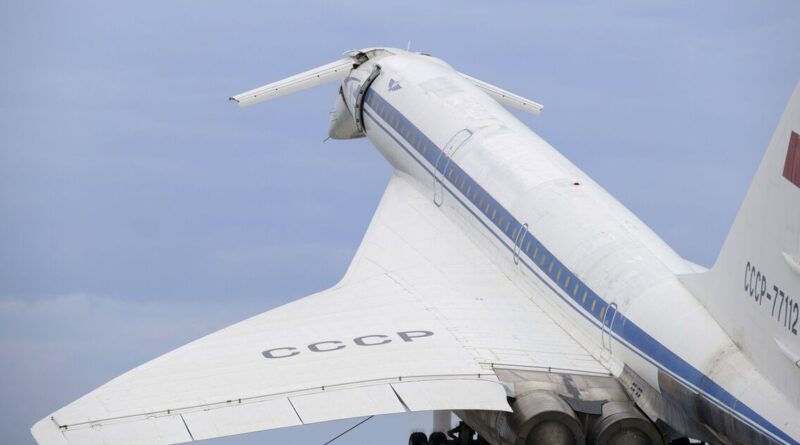Russia’s forgotten jet with tragic fate was ‘bigger and faster’ than Concorde | History | News
In recent years there’s been a lot of fuss about Boom Supersonic, the American aircraft company currently developing its successor to Concorde, the Anglo-French icon that became the first supersonic airliner to successfully operate over a prolonged period of time.
Known as the Overture, Boom Supersonic’s effort aims to bring supersonic commutes back into the 21st Century. Not only has the Overture reignited interest in Concorde, it has shone a light on the race to build it.
You see, Britain and France weren’t the only ones trying to break the speed of sound whilst holding a tea tray, America and the Soviet Union (now Russia) were developing speed machines of their own.
In fact, Russia went so far as to build one that was not only bigger than Concorde, faster the Concorde, but took to the skies earlier than Concorde too. This is the story of the Tupolev Tu-144.
Looking very similar to its western rival the Tu-144, nicknamed ‘Concordski’, had its maiden flight on December 31st 1968, two months before Concorde, and also went supersonic first too in June 1969, beating its rival by four months.
By this point, America’s Congress had cancelled Boeing’s supersonic project leaving Europe and Russia to fight it out in the atmosphere confined sequel to the Space Race.
Just like that race, the Russians got out ahead first, but would be clawed back in the longer it went on. Nevertheless, in the early heat of battle, the Tu-144 had the edge as it could carry more than Concorde (140 passengers verses 128) and fly faster (1,518mph vs 1,361mph).
Whilst Concorde lost out on speed and carrying capacity, it won hands down in longevity. Concorde carried passengers until 2003, but the Tu-144 only went on as long 1978, less than two years after entering service and less than a decade after first taking to the skies.
One of the major things that can affect an aircraft’s credibility is it crashing or breaking. The more often an aircraft crashes or breaks, the less likely people are willing to fly in them, and the less likely airlines are willing to lease them.
The Tu-144 suffered from this problem, crashing tragically at the 1973 Paris Air Show after Concorde had done its own demonstration run. Colliding with the village of Goussainville, the accident wiped out the six on board and eight on the ground.
The accident set the programme back four years, allowing Concorde to become operational first. The problems continued even when the Tu-144 made it to its destination with author Jonathan Glancey writing in his book ‘Concorde’ that it was very noisy and cramped on board. Writing in his book about the Tu-144, Mr Glancey said: “A flight on the Tu-144 was not for those with sensitive hearing.”
All in, the Tu-144 flew passenger 55 times and suffered with reliability problems throughout. Just like Concorde it was expensive to run, meaning each repair had a major financial impact.
The final nail in the coffin was fatal crash number two on May 23rd 1978 when a Tu-144 caught fire near Moscow, made an emergency landing that killed two flight engineers.
Following this tragedy, CNN reports that the Tu-144 was cancelled not just because it was expensive, but because Russia’s leadership had just lost interest.
Speaking to the publication, Soviet aviation expert Ilya Grinberg, said that an aircraft that had started off as a source of pride during an ideological battle had turned into one big flying headache.
They explained: “It was loss of interest in the program by the Soviet leadership as well as Aeroflot top brass. They’ve had enough of the headaches associated with this highly complex program. There were no real economic incentives to use it in the Soviet domestic markets.”
Following a ban on the Tu-144 carrying passengers, it would spend its retirement being used as a testing aircraft for both the Russian air force and NASA after the fall of the Soviet Union.
Whilst the Tu-144 lost the supersonic war to Concorde, ironically it’s Anglo-French victor would be cancelled for the same combination of reasons; high operating costs, low passenger demand, and fatal accidents.
22 years on from the sad departure of Concorde from the skies, the hope is that Boom Supersonic’s Overture will bring about a new golden era of supersonic passenger flight; the question is who else will follow?





